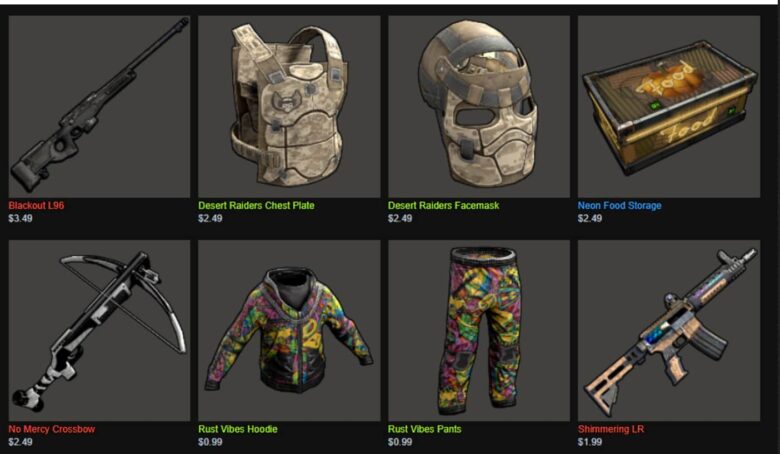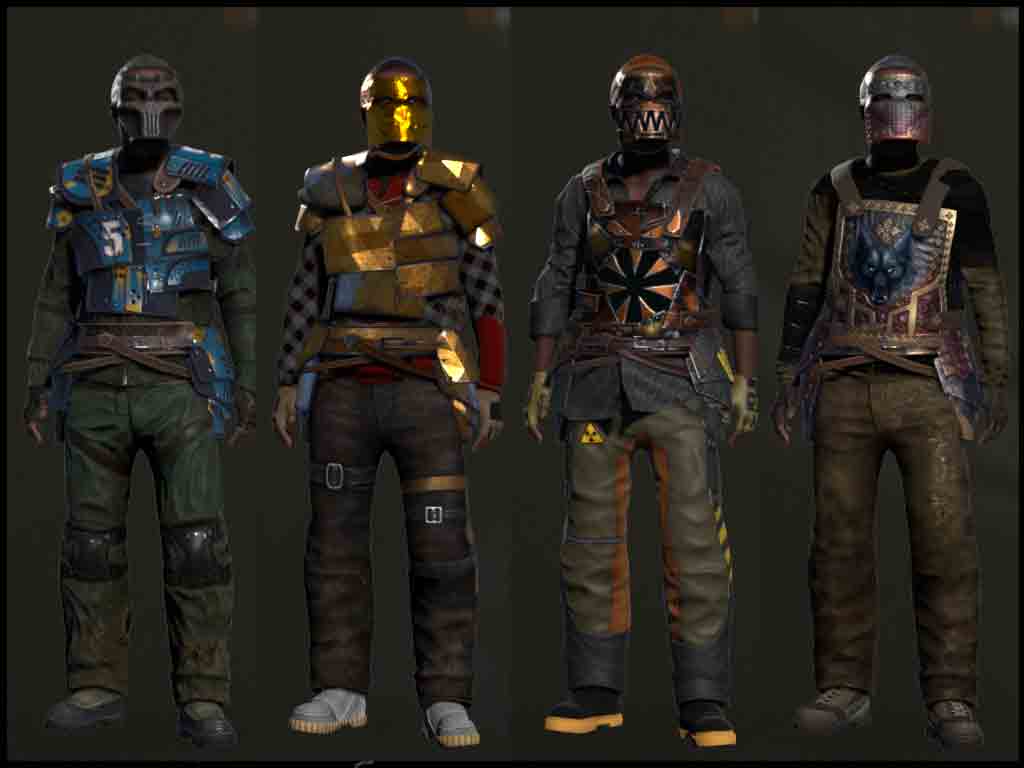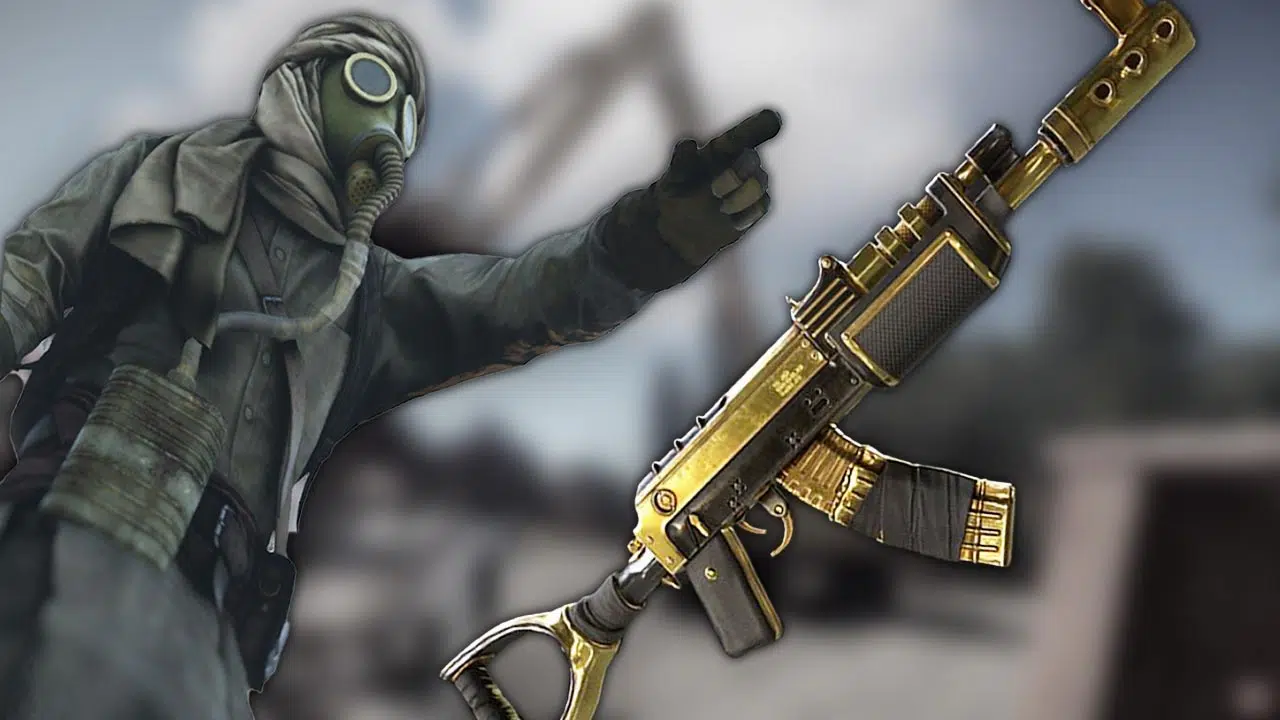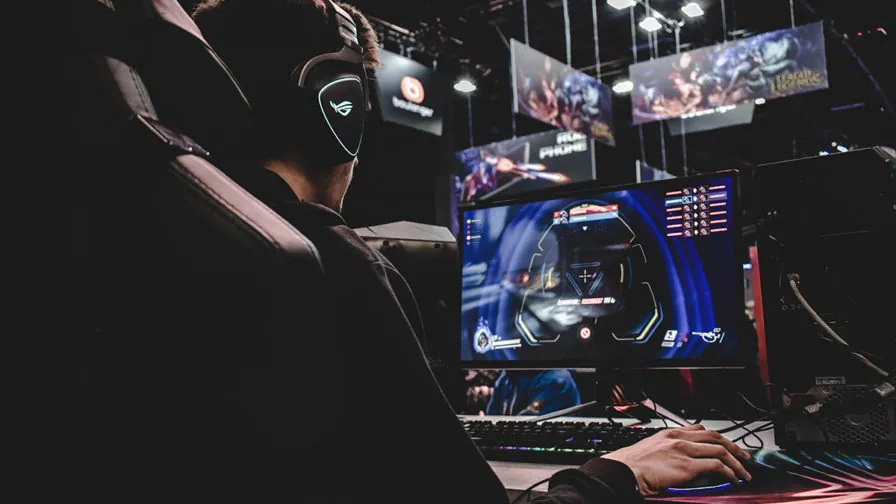Within the intricate mosaic of video gaming, there’s a singular trend that has managed to garner consistent excitement and dedication: in-game skins. These digital commodities have become a cornerstone in modern gaming culture. Particularly in Rust, a gritty survival-based multiplayer game, the allure of skins holds a powerful grip. Players invest time, effort, and even real-world currency for them. But what drives this obsession?
Contents
What Are Skins in Rust?
For those stepping into the sprawling domain of Rust for the first time, skins might seem like another trivial addition. However, their significance runs deep. They can be envisioned as virtual outfits or designs for characters and their tools. Unlike some in-game items that offer tactical advantages, skins are purely cosmetic. Their main appeal lies not in function but in form. Rust, known for its gritty realism, allows these items to flourish in a unique way.

Source: hellagood.marketing
The Aesthetics of Skins
Video games, at their core, are a blend of art and technology. The graphics, the environments, the character designs, all serve to draw players into a virtual world, letting them temporarily escape reality. Aesthetics, therefore, are not just about looking good—they’re about feeling good. Rust, with its harsh landscapes and survival mechanics, creates a compelling backdrop against which skins shine.
Status and Prestige
In many societies, clothing and accessories often speak volumes about a person’s status, achievements, or affiliations. The digital realm of Rust is no different. Here, skins have evolved into symbols—badges of honor, if you will. Sporting a rare or hard-to-acquire skin isn’t merely about aesthetics. It becomes a testament to a player’s dedication, skill, or even their longevity in the game. For some, it’s a way to stand out, to be recognized in a sea of players. For others, it’s a silent nod to in-game achievements or memorable moments.
Collecting and Customization
Human beings are collectors by nature. From stamps to antiques, to the digital age of playlist curation, there’s a deep-seated desire to gather, personalize, and showcase. Rust taps into this intrinsic urge with its skins. Beyond the mere acquisition, they offer players an avenue for self-expression. Within the harsh, unpredictable world of Rust, your avatar becomes an extension of your identity. By customizing gear and tools with chosen skins, players create a digital persona unique to them. It’s not just about standing out; it’s about carving out a digital space that resonates with their personality, their victories, and even their aspirations within the game.

Source: bumfuzzler.net
Unlocking Rust’s Hidden Avenues
Within the diverse ecosystem surrounding Rust, a particular niche has emerged: online casinos specializing in Rust items. These platforms allow players to gamble their acquired skins in various casino-style games, offering a chance to win even rarer and more sought-after items. While Rust gambling 2024 presents an alternative way to obtain elusive skins without direct in-game effort, they come with their own set of risks. Players might find the allure of potentially winning high-value items tempting, but it’s essential to remember that the nature of gambling means there’s always a possibility of losing one’s cherished items.
Investment and Market Value
At a cursory glance, investing real-world money for virtual items might seem irrational. However, delve a bit deeper, and the economics of skin trading unfold. The Steam Marketplace has become a bustling virtual economy where Rust skins, among other in-game items, are traded, sold, and purchased. For many, these skins aren’t just digital cosmetics; they’re assets. Like stocks or commodities, certain items appreciate in value over time, especially those that are rare or no longer available.
Psychological Rewards
Acquiring a desired skin in Rust often comes with a rush, a surge of dopamine. It’s akin to the feeling of unboxing a coveted item or achieving a long-sought-after goal. The process of striving for, and then obtaining a particular skin, taps into our brain’s reward pathways. It’s not just about the end goal but the journey—challenges faced, strategies formed, and the camaraderie with fellow players.

Source: guided.news
Social Interaction
Beyond individual achievement, skins play a pivotal role in fostering community ties. Rust, while being a game of survival, thrives on player interactions. Skins become conversation starters, gateways to trade negotiations, or even tokens of friendship. The act of gifting, trading, or showcasing them often facilitates bonds between players, laying the foundation for alliances, mentorships, or rivalries.
FOMO and Limited-Time Skins
The ticking clock, the vanishing act, the fear of missing out—FOMO isn’t just a contemporary term; it’s a driving psychological force. Game developers astutely tap into this by introducing limited-time or event-exclusive skins. The ephemeral nature of these skins creates an urgency, making players more inclined to play longer, engage deeper, or even spend real-world currency. The allure isn’t just in the design but in the exclusivity, knowing that owning such a skin places them in a unique club of sorts, a testament to their dedication during a specific in-game moment or event.
Skinner Box Mechanisms
Delving deeper into the psychological underpinnings, the concept of the Skinner box becomes relevant. Named after the psychologist B.F. Skinner, it’s a reference to experiments where consistent actions led to rewards. In the world of gaming, and especially with skins in Rust, players often perform repetitive tasks, engage in specific challenges, or spend extended periods in the hope of acquiring a coveted skin.

Source: codemotion.com
The Role of Game Developers
While players are at the heart of the skins economy, game developers play the crucial role of architects. They design, introduce, and market these skins, understanding their allure and their potential to drive engagement. Monetizing skins becomes a way for developers to fund ongoing game development, server maintenance, and other associated costs. But beyond the economic aspect, it’s also about enriching the game’s lore, enhancing the player’s experience, and keeping the community engaged and invested.
Conclusion
The world of skins in Rust is a complex tapestry of aesthetics, economics, psychology, and social dynamics. As we’ve journeyed through the myriad reasons behind gamers’ obsessions, it becomes evident that skins are more than just virtual commodities; they’re experiences, memories, and symbols. As the landscapes of gaming continue to evolve, it would be intriguing to see how the role of skins transforms. For now, they remain a fascinating study in human behavior, desire, and the digital age’s intersections.
